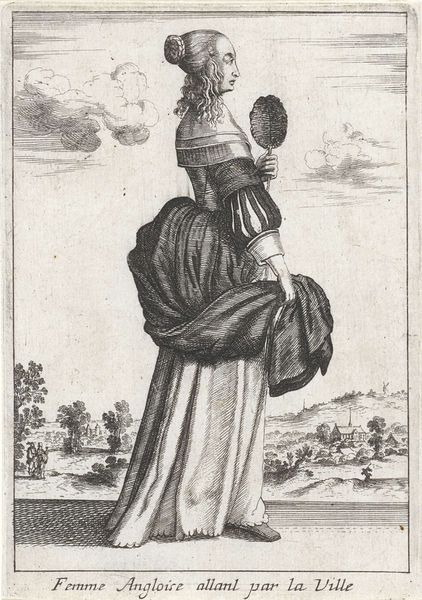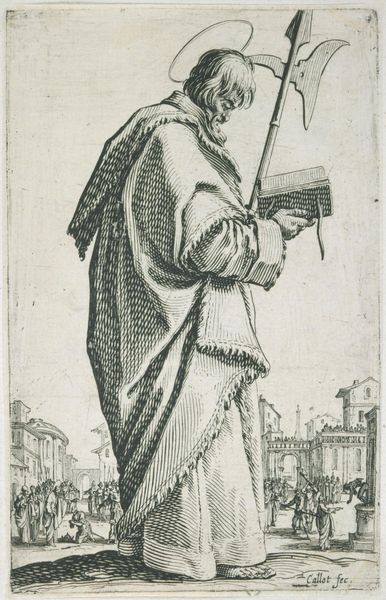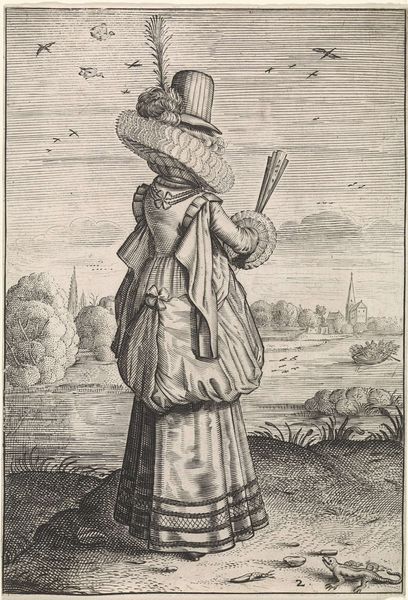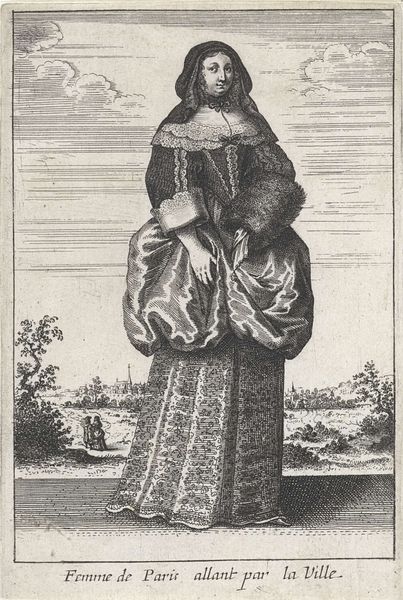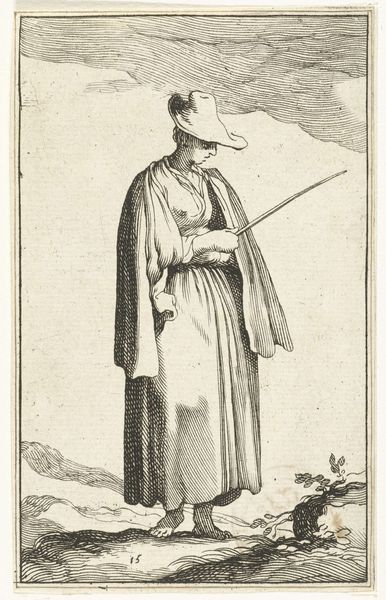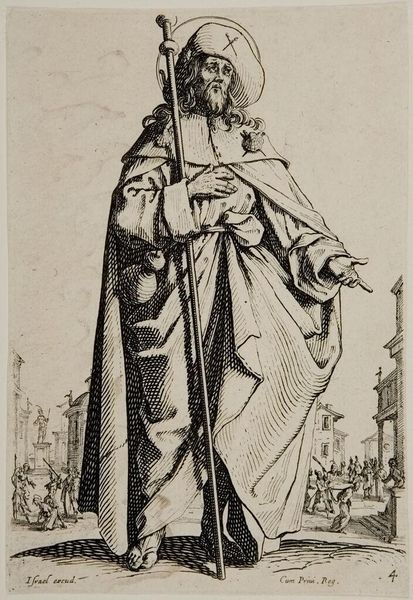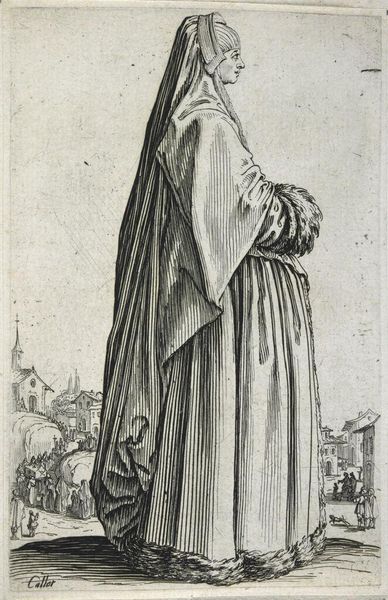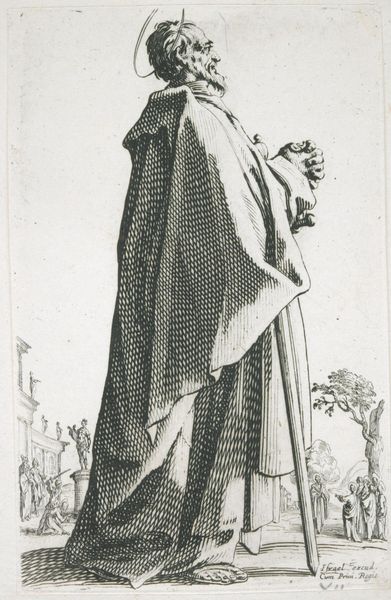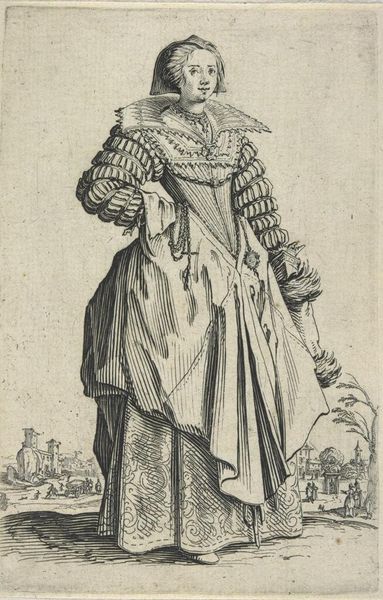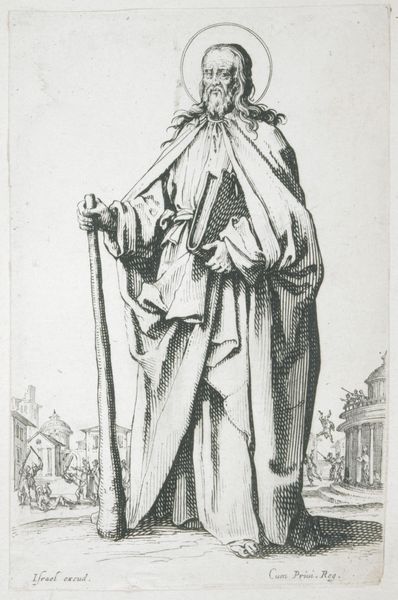
print, engraving
#
portrait
#
baroque
# print
#
old engraving style
#
figuration
#
genre-painting
#
engraving
Dimensions: height 134 mm, width 93 mm
Copyright: Rijks Museum: Open Domain
Curator: Let’s explore this print, "Femme de Cologne allant par la Ville" made in 1662. It's currently housed at the Rijksmuseum. I’m immediately struck by the incredible detail captured in this seemingly simple engraving of a woman walking in a city. The engraver's ability to render textures and light with such precision is noteworthy. What is your initial take? Editor: My first impression is the overwhelming feeling of societal constraint that the portrait evokes. The woman's attire, though typical of Cologne, seems like a deliberate constraint. There's something deeply unsettling about how class and gender roles manifest in her garments, no? Curator: Absolutely. But the craft! Look closely at how the engraver manages to convey different fabric weights through the density and direction of lines. The ruffled collar versus the heavy drape of her skirt–each requires a distinct technique, reflecting specialized artisan knowledge and skill. Also note, how this reflects upon the artist and the studio involved in its making? It’s a complex layering of processes and skills from different contributors which is reflected in this finished artwork. Editor: Indeed, the woman's clothing does serve to showcase social standing. Her crisp linen emphasizes the separation of nobility and peasantry through contrasting aesthetics. Further, there is something deeply performative and exhausting in the ways nobility needed to express itself through fashion, like an aesthetic straight jacket. How does her physical appearance contribute to power dynamics? Curator: Good point. The production of such refined clothing speaks volumes about a material-driven hierarchy and economy, of textile production, artisanal workshops. The finished dress is a signifier, the engraving of this very sign a communication tool which the marketplace relies upon. It gives viewers a method to understand and then produce luxury. Editor: Considering Cologne was a central part of trade routes, the choice of subject becomes fascinating. How does she reflect not just local identity but global exchange and cultural blending during a fraught time in European history? I'd love to examine further her positioning within Europe's cultural cartography of gendered roles! Curator: Ultimately, the interplay between representation and material production elevates our understanding of how these societies valued and commodified everything. The lines on a copperplate illuminate hierarchies far beyond mere visual representation. Editor: I concur, it prompts reflections on how representation is itself a political act, always shaping and reshaping our understandings of personhood, history, and potential futures.
Comments
No comments
Be the first to comment and join the conversation on the ultimate creative platform.
